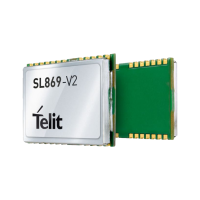For example, antenna X has an antenna gain of 5 dBic at azimuth and an LNA gain of
20 dB for a combined total of 25 dB. Antenna Y has an antenna gain of -5 dBic at azimuth
and an LNA gain of 30 dB for a combined total of 25 dB. However, in the system, antenna
X will outperform antenna Y by about 10 dB.
An antenna with higher gain will generally outperform an antenna with lower gain.
However, once the signals are above about -130 dBm for a particular satellite, no
improvement in performance would be realized. But for those satellites with a signal
level below about -135 dBm, a higher gain antenna would amplify the signal and improve
the performance of the GNSS receiver. In the case of really weak signals, a good antenna
could mean the difference between being able to use a particular satellite signal or not.
System Noise Floor
The receiver will display a reported C/No of 40 dB-Hz for an input signal level of -130
dBm. The C/No number means the carrier (or signal) is 40 dB greater than the noise floor
measured in a one Hz bandwidth. This is a standard method of measuring GNSS receiver
performance.
The simplified formula is:
Equation 10: Carrier to Noise Ratio
Thermal noise is -174 dBm/Hz at 290 K.
We can estimate a typical system noise figure of 4 dB for the module, consisting of the
pre-select SAW filter loss, the LNA noise figure, and implementation losses within the
digital signal processing unit. The DSP noise is typically 1.0 to 1.5 dB.
However, if a good quality external LNA is used, the noise figure of that LNA (typically
better than 1dB) could reduce the overall system noise figure from 4 dB to approximately
2 dB.
RF Trace Losses
RF Trace losses on a PCB are difficult to estimate without having appropriate tables or
RF simulation software. A good rule of thumb would be to keep the RF traces as short as
possible, make sure they are 50 Ω impedance and don’t contain any sharp bends.

